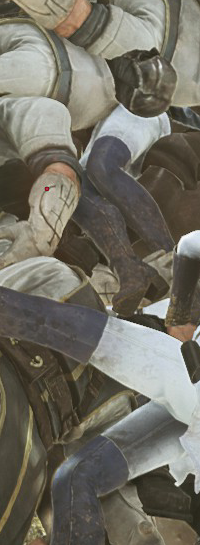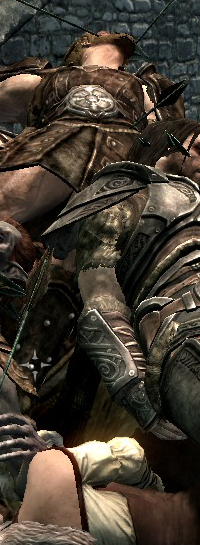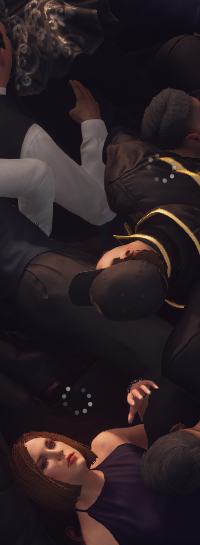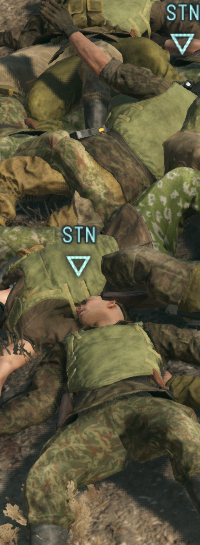Piles
A short 14 minute clip from Piles
The Games
Piles is a durational video performance piece about bodies.
Piles is a collection of over 22 hours of video recordings, livestreamed on Twitch, of the piling up of dead or unconscious bodies in seven different video games: Dishonored: Death of the Outsider, Skyrim, Hitman, Metal Gear Solid V, Viscera Cleanup Detail, Slime Rancher, and Tabletop Simulator.
The practice of piling up bodies is actually relatively common in video game playing communities—a simple YouTube search will bring up many videos of players documenting piles of bodies that they have created in games. These videos are primarily presented as gory spectacles, or even as jokes. Piles seeks to turn this uncritical practice critical, to interrogate how these video games incorporate abstractions like life, death, and unconsciousness into their mechanical infrastructure, and to reveal this through the repetitive violent practice of incapacitating or killing people and piling up their bodies.
Clicking any image of a game above will take you to a page with insight specific to that game. Four games in this project point to traditional AAA (big budget games directed towards a generic "gamer" demographic) values and aesthetics around violence and bodies, Dishonored, Skyrim, Hitman, and Metal Gear Solid V. The other three, Viscera Cleanup Detail, Slime Rancher, and Tabletop Simulator, independent games with smaller budgets and goals, serve as a variety of counterpoints and provocations to the previous four.
The piles of bodies in Piles reflect real-life piles of bodies at sites of mass death and torture. Abu Ghraib, where the United States Army and CIA illegally tortured prisoners in ways including piling them into pyramids which were then photographed, is a particularly important touchstone for the project. Like many of the prison guards at Abu Ghraib, I am a straight white American man. In many video games, I am able to freely play with the kind of executive, imperial power that those guards used to torture, and create something that visually reflects what that torture looked like. In Piles I am not piling up bodies for my own sexual or sadistic pleasure, but many people who stack up bodies in games and upload them to YouTube are doing it for pleasure of some kind, whether of spectacle or of control. Access to a zone in which to play with imperial control and sexual power over others exists in the DNA of these games. Considering the real-world violence of male entitlement to women's bodies, and white entitlement to the bodies of people of color, Piles suggests pausing to reflect on how games can uncritically reinforce this violent entitlement.
While the research does not suggest that video games make people more violent, video games do make implicit statements about violence and about relationships between violence, life, and death. When a game presents a dead body in a way that is nearly indistinguishable from an unconscious body (as in Dishonored), it communicates a belief in the adjacency of the two states as concepts and as aesthetic representations. When I perform my hundredth bloodless attack with a wrench in Hitman, the game not only communicates that violence is bloodless and quick, but that in order to have a pleasurable time performing violence it should be bloodless and quick. For these reasons, Piles is durational, I want you to spend time with the repetitive labor of violence and to see things you wouldn't necessarily have been able to see before.
When everyone who is alive in a game is governed by animation routines and an animation system, and everyone who is dead or unconscious is governed by a ragdoll physics system, these are more than just aesthetic or mechanical choices. These systems become representative of what it means to be alive and what it means to be dead in limited game worlds. The symbolic and abstract become wedded to very concrete mechanical systems, and this relationship is communicated to the player in the process of playing a game. Who this player is, and what they bring to a game, is crucially important in determining what is communicated. This is why I have to center myself, who I am, and the political stakes of me piling up bodies in games. All of the videos in the project are proceeding from my personal save files as a way of concretely underlining this.
The symbolic resonance of a pile of bodies in a game is political. The mechanics of how a pile of bodies is made in a game is political. The infrastructure governing how aesthetic representation maps to gameplay mechanics in a game is political. Who has access to power, and what kind, in a game is political. Who has the access and time to play a game is political. Watch closely, and take none of it for granted.






